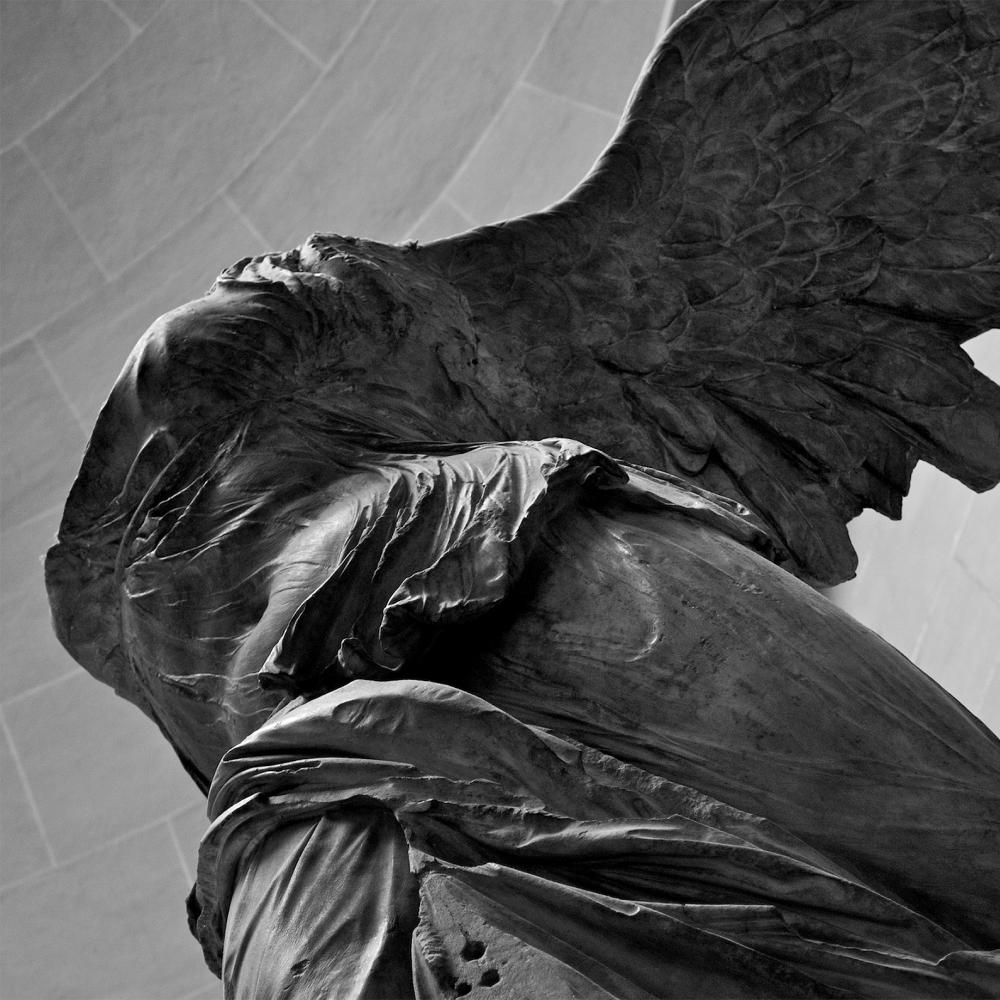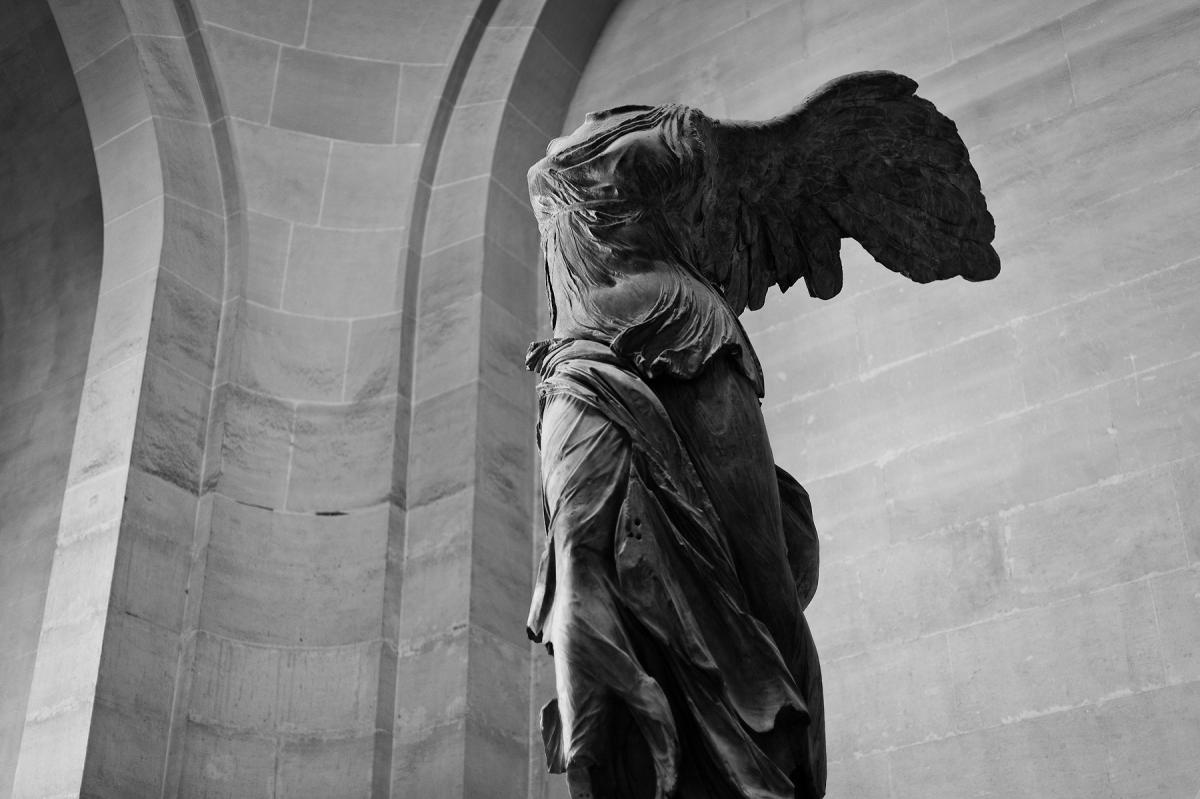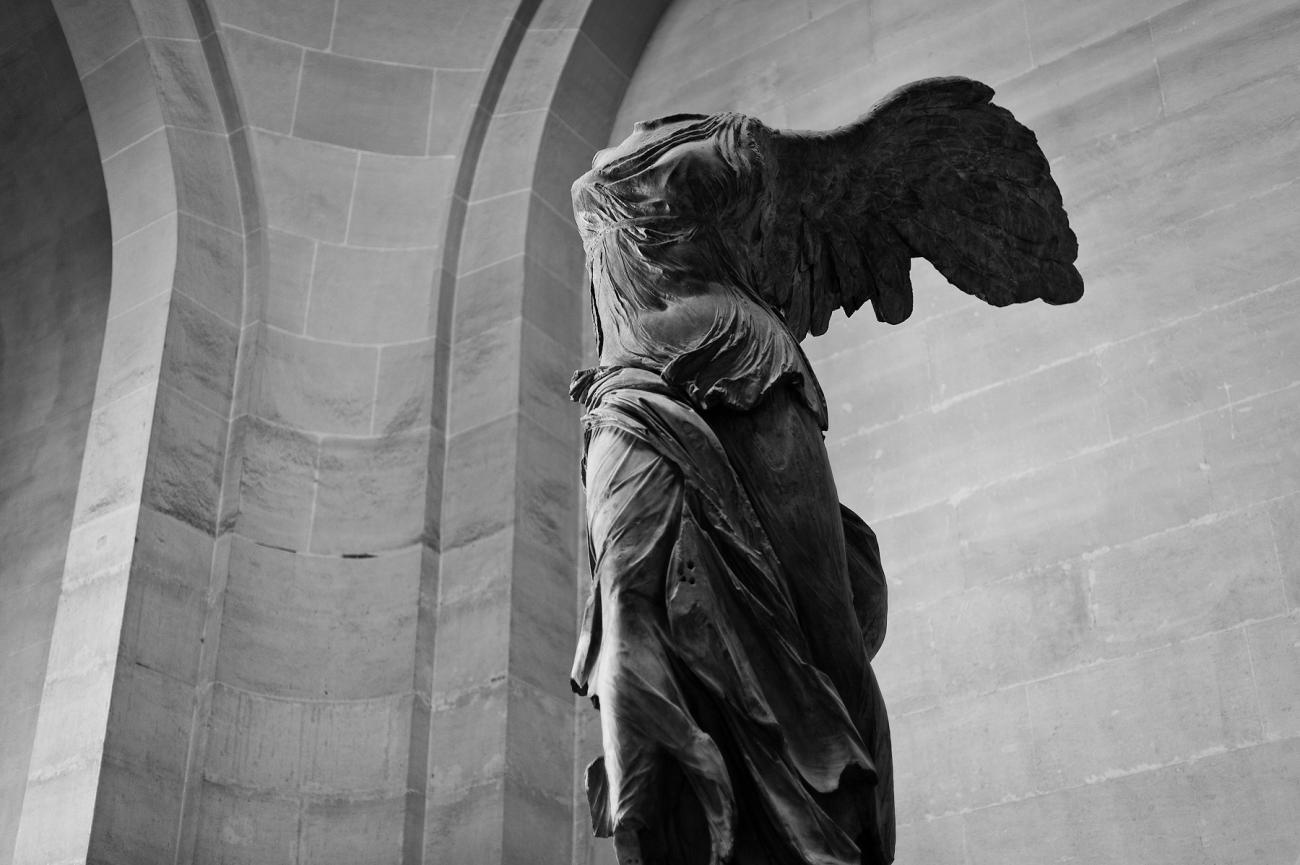Ten million visitors a year gape at the majesty of Winged Victory of Samothrace in the Louvre, where she appears ready to take flight from her perch atop the Daru staircase. The eight-foot marble statue was installed in Paris shortly after its discovery on the remote Greek island of Samothrace in 1863 by French diplomat and amateur archaeologist Charles Champoiseau.
From a hillside overlook, Winged Victory originally presided over a temple complex to which pilgrims from across the region thronged between the fourth and second centuries BCE to undergo initiation in the secret rites of a mystery religious cult. The rites, being secret, remain so, but are thought to have involved blindfolds, torchlit processions, and bountiful libations.
Dating to ca. 190 BCE, the statue depicts the goddess Victory, or Nike, alighting on the prow of a warship. Although Winged Victory is widely believed to have been sculpted to commemorate a naval victory, neither the battle nor the sculptor has been determined.
Bonna Wescoat, an Emory University archaeologist who directs excavations at Samothrace, is trying, with NEH support, to resolve whether the Nike statue was enclosed or stood with her wings open to the Aegean winds. The difficulty, Wescoat explains, is in reconciling why the statue is so well preserved—suggesting it may have been sheltered—while its original setting is not. “Iconographically, that’s awkward because Nike is a flying figure,” says Wescoat. “If you put her behind columns, it’s like putting her in prison.”
Wescoat was part of an international team of archaeologists that advised the Louvre on its restoration of Winged Victory, in 2013, to mark the 150th anniversary of the statue’s discovery. At the time, Louvre researchers sought to recreate what the original may have looked like but were unable to model arms that matched the grace of the rest of the sculpture.
“I suspect it’s like the Sistine Chapel,” says Wescoat, referring to the frescoes’ appearance before restoration, “where you’re so used to one thing, you’re not going to like anything.”




